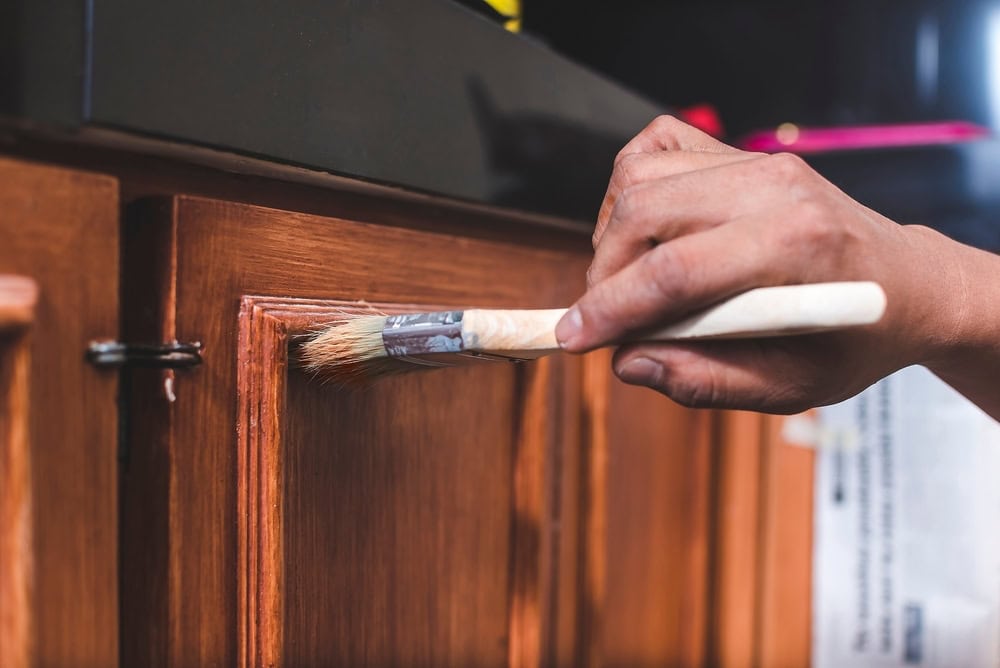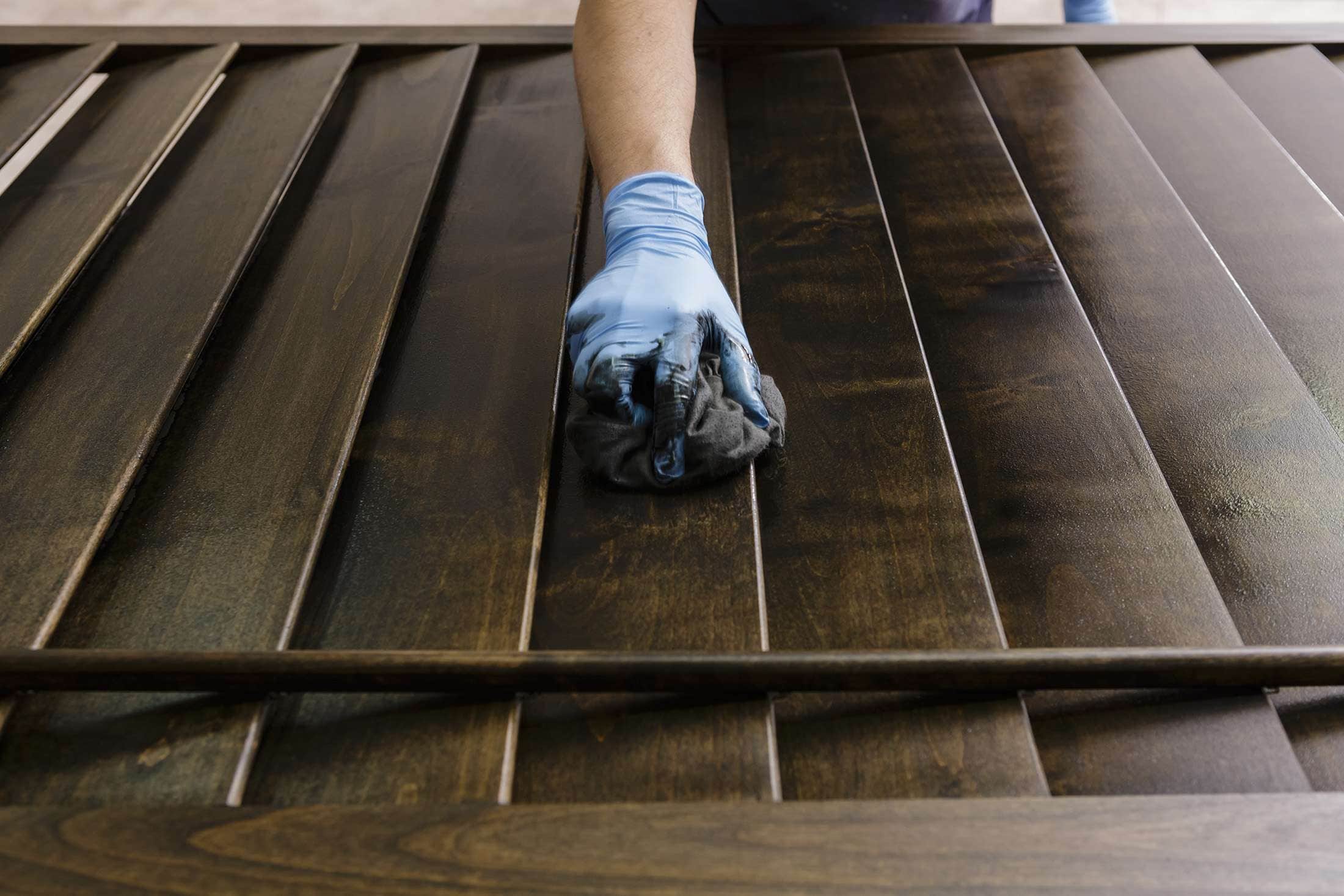Navigate Colorado's challenging climate with the right wood finishes that protect and enhance your home's wooden surfaces.
Share:

Summary:
Colorado’s high-altitude environment creates a perfect storm for wood damage. UV radiation increases by 6-10% for every 1,000 feet of elevation, meaning your Larimer County home faces significantly more aggressive conditions than properties at sea level.
The science is straightforward but concerning. UV rays break down lignin, the natural binding agent that gives wood its strength and holds fibers together. This process, called photo-oxidation, starts immediately when unprotected wood meets sunlight.
What you see as graying, cracking, or splintering is actually your wood’s cellular structure breaking down. Once this process begins, moisture infiltration accelerates decay, creating the perfect conditions for rot and structural damage.

Many homeowners discover that finishes working perfectly in other climates fail miserably here. The reason comes down to Colorado’s unique combination of intense UV exposure, dramatic temperature swings, and low humidity.
Standard polyurethane finishes designed for gentler climates often crack within two seasons. The constant expansion and contraction caused by temperature fluctuations—sometimes 40-50 degrees in a single day—creates stress that inferior finishes can’t handle.
Low humidity compounds the problem by causing wood to dry out rapidly. When wood loses moisture content too quickly, it shrinks unevenly, creating gaps and cracks that allow moisture and UV rays deeper penetration. This cycle accelerates deterioration and shortens the lifespan of both the wood and its protective coating.
The key lies in understanding that Colorado wood finishes must be specifically formulated for high-altitude, high-UV environments. Oil-based penetrating stains work exceptionally well here because they move with the wood rather than forming a rigid surface film. Water-based options with UV inhibitors also perform admirably when properly applied.
Professional application makes a significant difference. Proper surface preparation—including thorough cleaning, sanding, and sometimes chemical stripping of old finishes—ensures maximum adhesion and longevity. The application technique, timing, and environmental conditions during curing all impact final performance.
Skipping proper wood finishing or choosing inappropriate products creates expensive problems down the road. What starts as minor graying or surface roughness quickly escalates into structural issues requiring complete replacement rather than refinishing.
Consider a typical deck scenario. An unprotected cedar deck in Larimer County might look acceptable for the first year, but UV damage accumulates daily. By year two, you’ll notice significant graying and surface roughening. Year three brings cracking and splintering. By year four or five, boards may need replacement rather than refinishing.
The financial impact is substantial. Deck refinishing typically costs a fraction of deck replacement, but only if you catch deterioration early. Once wood fibers break down significantly, no amount of sanding and refinishing will restore structural integrity.
Interior wood faces similar challenges, especially in rooms with large windows or skylights. Kitchen cabinets, hardwood floors, and trim work all suffer from UV exposure filtering through glass. The damage appears more gradually indoors but follows the same destructive pattern.
Smart homeowners recognize that quality wood finishing is insurance, not expense. Investing in appropriate finishes and professional application extends wood lifespan dramatically while maintaining aesthetic appeal and property value.
Want live answers?
Connect with a LF Rosa Painting expert for fast, friendly support.
Colorado’s demanding environment requires careful finish selection based on wood type, exposure level, and intended use. Understanding the three main categories—penetrating finishes, surface finishes, and hybrid options—helps you make informed decisions.
Each finish type offers distinct advantages and limitations. Penetrating finishes soak into wood fibers, providing protection from within while allowing natural wood movement. Surface finishes create protective films that shield wood from direct exposure but may crack if the wood moves significantly.
The choice often depends on balancing protection level with maintenance requirements and aesthetic preferences.

Penetrating oil-based stains excel in Colorado’s challenging environment because they work with wood’s natural properties rather than against them. These finishes soak deep into wood fibers, providing protection that moves with seasonal expansion and contraction.
Oil-based penetrating stains typically contain UV inhibitors specifically designed for high-altitude conditions. They enhance wood grain while providing water repellency and fade resistance. Popular options include semi-transparent stains that showcase natural wood character and solid-color stains that provide maximum protection for severely weathered surfaces.
Application timing matters significantly with penetrating finishes. Colorado’s low humidity means these products dry faster than in more humid climates, requiring efficient application techniques to avoid lap marks and uneven penetration. We understand these timing considerations and adjust our methods accordingly.
Maintenance schedules for penetrating finishes in Larimer County typically run every 2-3 years for horizontal surfaces like decks and 3-5 years for vertical surfaces like siding. The exact timeline depends on exposure level, wood type, and finish quality. Regular cleaning and inspection help maximize intervals between reapplications.
Water-based penetrating stains offer environmental advantages with lower VOC content and easier cleanup. Modern formulations include UV protection comparable to oil-based options while drying more quickly and maintaining clearer color over time.
Surface finishes like polyurethane, varnish, and conversion varnish create protective films that shield wood from direct environmental contact. These finishes work best on interior applications or exterior surfaces with minimal wood movement.
Polyurethane remains the most popular surface finish for its durability and versatility. Oil-based polyurethane provides excellent protection with an attractive amber tone that enhances wood grain. Water-based polyurethane offers similar protection while maintaining wood’s natural color and providing faster dry times.
For Colorado applications, exterior-grade polyurethanes must include UV inhibitors and flexibility agents. Spar urethane, specifically designed for marine environments, performs exceptionally well on exterior doors, trim, and furniture that need maximum protection but won’t experience significant dimensional changes.
Application technique becomes critical with surface finishes. Colorado’s dry air and intense UV exposure mean you have less working time before the finish begins to set. We use techniques like back-brushing and maintaining wet edges to ensure smooth, even coverage without visible brush marks or overlap lines.
Maintenance requirements for surface finishes differ significantly from penetrating options. Rather than soaking into the wood, these finishes wear away from the surface. When wear becomes noticeable, complete removal and reapplication often provide better results than attempting to coat over existing finish.
Understanding when surface finishes make sense versus penetrating options helps optimize both performance and maintenance requirements for your specific application.
Even the highest-quality wood finish fails without proper application. Colorado’s challenging environment demands precise preparation, application, and curing conditions that most DIY efforts can’t achieve consistently.
Professional wood finishing involves much more than applying product to wood. Surface preparation typically accounts for 70-80% of project time but determines 90% of final performance. Proper preparation, environmental control during application, and understanding of product-specific requirements separate professional results from amateur attempts.
When you work with us at L F Rosa Painting, you benefit from years of experience adapting techniques to Larimer County’s specific conditions and ensuring your investment provides maximum protection and longevity.
Article details:
Share:
Continue learning: